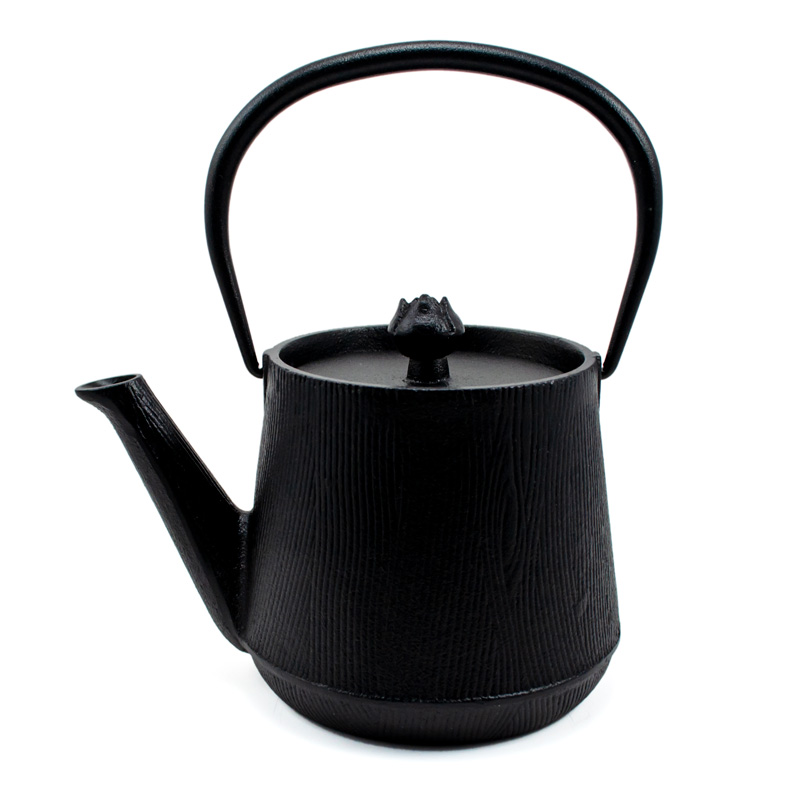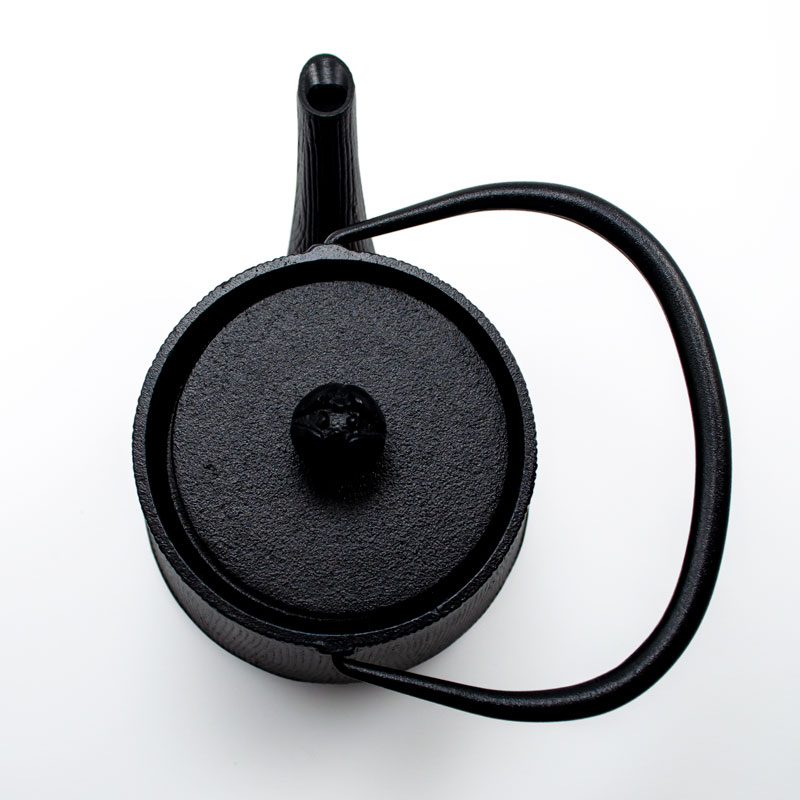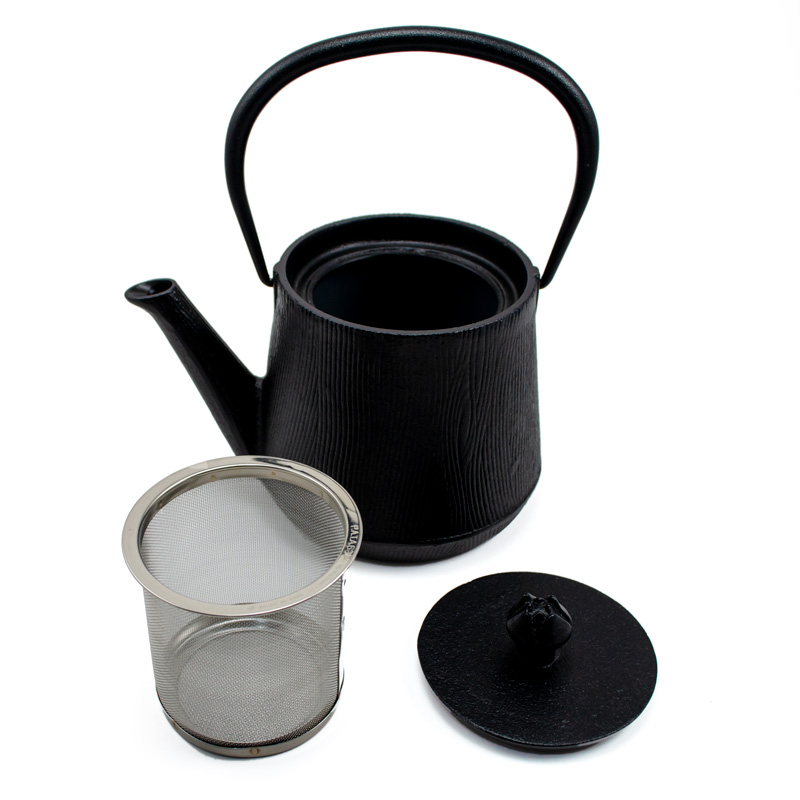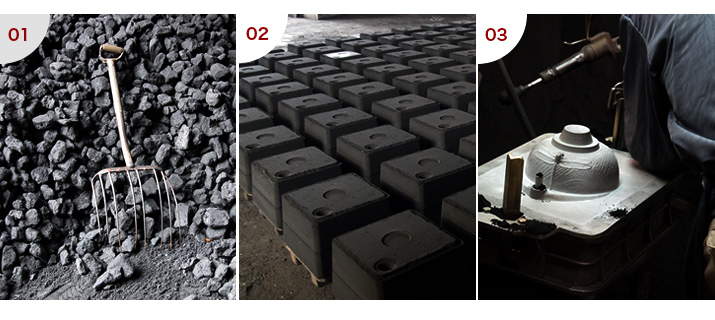Nambu Ironware, 2-in-1 Iron kettle and teapot type, WOODGRAIN, black, 0.6L

We would like to create Nambu ironware that fits in with a variety of interior styles, including Western or Japanese.
It was with this firm belief that the grain pattern was produces from many design sketches drawn by our eighth generation. The knob looks like a flower bud.
It is tall and has a capacity of 0.6 liter.
The strainer is also tall, spacious and large, which allows tea leaves to open well.
This can be used not only for boiling water for daily use, but also as a teapot.

Notice
The surface is coated with an antirust oxide layer using the traditional technique called kama-yaki (high temperature baking treatment), but as it is cast iron, rust may occur due to moisture and humidity.
Since the inside is not enameled, the leached iron and tannin may bind and discolor the tea. It is harmless to the human body.
2-in-1 Iron kettle and teapot type
You can use this type not only to boil water over an open flame, but also as a teapot with a tea strainer inside.
Nambu ironware is produced using the traditional technique called "kama-yaki" to generate an oxide layer on the surface. It leads to "rust resistance" and "dissolved iron effect" and makes tea and coffee taste better.

| Product Details |
|---|
| Materials |
Cast iron, Stainless-steel (Tea strainer)
*Suitable for all stovetops including induction
*We have confirmed that the product can be used with 100V(200V NOT RECOMMEDED), but some models may not respond, so please contact the manufacturer.
|
| DIMENSIONS |
Entire width: 16cm
Entire height: 16cm
Depth: 11cm
Height to the lid: 10cm
Capacity: 0.6L
Weight: 1.3kg
|
| CARRE INSTRUCTIONS |
When using induction heating, use low to medium heat.
Do not wash with detergent.
Do not wash using a sponge or scrubber.
Please note that cooking near this pot may result in oil stains and discoloration due to oil splashes.
|
Nambu Ironware Production

01. Coke is the fuel. Coke has a calorific value of more than 1,500 degrees Celsius. This heat melts iron.
02. A mold made of sand. Molten iron is poured into the mold to form an iron kettle or teapot.
03. This mold is a modern remake of Tominoshin Oikawa V's original tetsubin dragonfly from 1954. This is used to make the sand mold in 02.